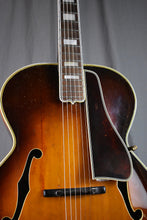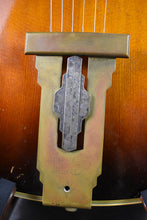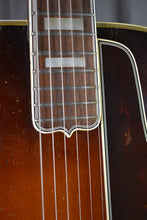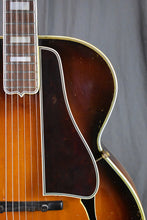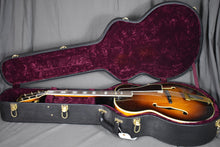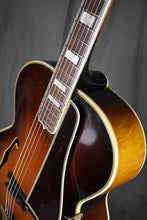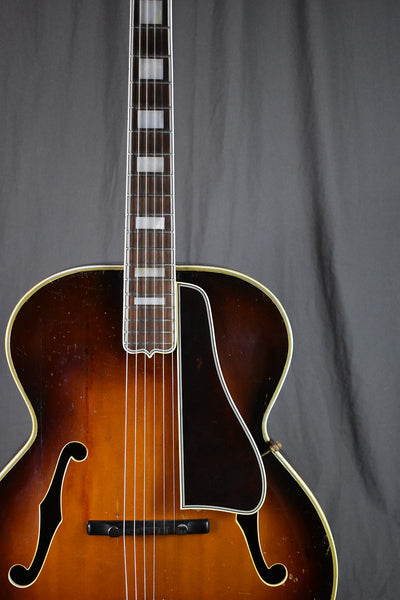First introduced in 1923 under the direction of acoustic engineer Lloyd Loar, the L-5 has always been considered Gibson's premier archtop guitar. In 1934, its size was increased to the 17" Advanced size, which made the L-5 the ideal guitar for the Big Band era.
Although the L-5 was not built during the war years, the post-war L-5 picked up right it where the model left off in 1941. In the late-'40s, its specs were virtually identical to later prewar examples, but in 1951 the model was pushed electric and was never the same. The original 17" acoustic archtops produce a sound like no other—bright, bold, and cutting, but also delicate and rich in detail.
This 1948 is an impressive beast in so many ways. Aesthetically, it is high end and dressed to the nines—full-body sunburst, elaborate purfling, pearl block inlays, Art Deco tailpiece, and of course the iconic flowerpot inlay on the peghead. Functionally, this L-5 is the culmination of Gibson's acoustic archtop design: 17" Advanced body, elevated fingerboard, carved Spruce top plate supported by two parallel tone bars, and a carved Maple top that shows nice book match.
Playing this '48 L-5 is an awe-inspiring sonic experience. It has wide-open dynamics, and it is capable of the cutting swing sound, but it's not explicitly a jazz box. It has sweet subtleties that sound great in a wide range of applications, and it resonates and sustains more like a string instrument than a guitar. Interestingly, Lloyd Loar's original design borrowed from the cello, and 25 years after the first L-5 hit the block, this 1948 example still shows the violin family influence.
As for repairs, this 1948 L-5 arrived to us 100% structurally stable and playing like a dream with a low, inviting setup. It has two repaired top cracks on the bass side of the top, and there are two filled pin holes from a past pin bridge. It is currently set up with a proper Ebony floating bridge. The neck appears to have been reset, and there is a surface crack on the bass side near the heel that is on top of the inside kerfing. It has been refretted, and the nut has been replaced. The original tuners still hold tune as they should, and the original pickgaurd has survived the test of time (but it does have a clever wine cork support so it doesn't rattle). Modern Gibson hardshell case included!

































